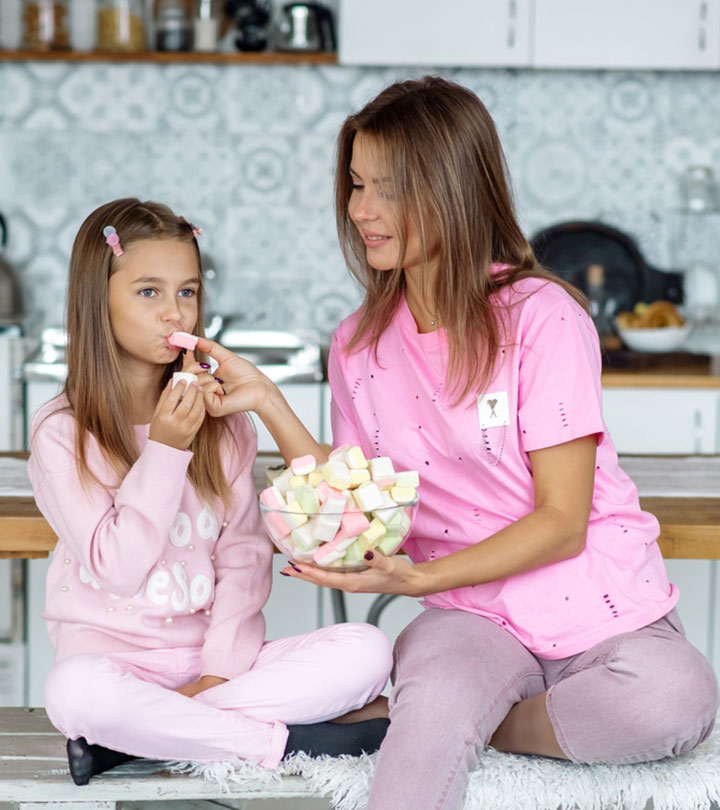
Image: Shutterstock
As a new parent, you are constantly baffled by the incredible abilities and instincts your baby possesses. One of these fascinating reflexes is the rooting reflex. It is a natural response that plays a significant role in early feeding and bonding. In this article, we’ll explore the rooting reflex in babies, diving into its definition, purpose, and how it evolves as your little one grows. Understanding this reflex will not only deepen your connection with your baby but also help you navigate the early stages of feeding and provide essential care. So, let’s delve into this intriguing topic and discover all there is to know about the rooting reflex.
What Is The Rooting Reflex?
The rooting reflex is an automatic response observed in newborn babies. It is characterized by their instinctive turning of the head and opening of the mouth in response to touch or stimulation on the cheek or around the mouth. This reflex allows babies to seek out and latch onto the breast or bottle for feeding.
The Purpose Of The Rooting Reflex
Image: Shutterstock
The rooting reflex serves a vital purpose in a baby’s early feeding journey. It helps them locate the source of nourishment and initiate the feeding process. This instinctive response ensures that newborns can access food and receive the essential nutrients needed for growth and development.
How Does The Rooting Reflex Work?
When the baby’s cheek or mouth area is gently touched or stroked, the rooting reflex is triggered. As a result, the baby instinctively turns their head towards the stimulus and opens their mouth in search of the source. This reflex is designed to help babies find the nipple and establish a secure latch for breastfeeding or bottle feeding.
Evolution Of The Rooting Reflex
Image: Shutterstock
The rooting reflex is most prominent in newborns and gradually diminishes as babies grow older. Around three to four months of age, infants begin to gain more control over their head movements and become more intentional in their feeding behaviors. As a result, the rooting reflex becomes less pronounced and may eventually disappear altogether by the age of four to six months.
Tips For Encouraging The Rooting Reflex
1. Proper Positioning
Ensure that you position your baby in a way that allows easy access to the breast or bottle. Supporting their head and neck while aligning their body can facilitate a comfortable feeding position and aid in triggering the rooting reflex.
2. Gentle Stimulation
Use gentle touch or stroking around the cheek or mouth area to elicit the rooting reflex. Lightly brush your finger or the nipple against their cheek to initiate the instinctual turning of the head and mouth opening response.
3. Eye Contact And Bonding
Establish eye contact with your baby during feeding. Engaging in loving gazes and tender interactions can strengthen the bond between you and your little one, creating a positive feeding experience.
Common Concerns And Considerations
Image: Shutterstock
1. Overstimulation
While gentle stimulation is necessary to trigger the rooting reflex, it’s important to avoid overstimulating your baby. Excessive or forceful touch may lead to discomfort or agitation. Pay attention to your baby’s cues and adjust the intensity of the stimulus accordingly.
2. Reflex Persistence
Some babies may exhibit a persistent rooting reflex even beyond the typical age range. If you notice that your baby continues to display this reflex past six months of age or if you have any concerns about their feeding behavior, consult your pediatrician for guidance.
The Role Of The Rooting Reflex In Breastfeeding
The rooting reflex plays a crucial role in facilitating successful breastfeeding. It helps infants locate and latch onto the breast, promoting effective milk transfer. Establishing a proper latch is essential for ensuring adequate milk intake and avoiding nipple soreness or discomfort.
The Rooting Reflex And Bottle Feeding
Image: Shutterstock
The rooting reflex is also significant for babies who are bottle-fed. When using a bottle, opt for a nipple that mimics the shape and texture of the breast. This can help stimulate the rooting reflex and make the transition between breast and bottle feeding smoother.
Supporting The Rooting Reflex During Solid Food Introduction
As your baby begins to explore solid foods, the rooting reflex may still play a role in their feeding journey. Introducing soft, age-appropriate foods alongside breastfeeding or bottle feeding can help transition them to a varied diet. Offering small amounts of pureed or mashed foods on a spoon near their mouth can elicit the rooting reflex, encouraging them to open their mouth and accept the new textures and flavors.
The Importance Of Patience And Responsive Feeding
Image: Shutterstock
When it comes to feeding and nurturing your baby, patience and responsiveness are key. Understanding and respecting the rooting reflex can guide you in providing a calm and supportive feeding experience. Remember to follow your baby’s cues and offer feeds when they show signs of hunger, rather than adhering to strict schedules. Responding to their needs with love and attentiveness helps foster a positive feeding environment and strengthens the parent-child bond.
The rooting reflex is an amazing instinctive response that allows newborns to find nourishment and establish a connection with their caregivers. Understanding the purpose and function of this reflex empowers parents to create a supportive feeding environment and forge a deep bond with their baby. Remember to enjoy these precious moments and embrace the journey of feeding and nurturing your little one. As they grow and develop, the rooting reflex will evolve, giving way to new milestones and discoveries. Let us know in the comments your experience with your baby’s rooting reflex!

















